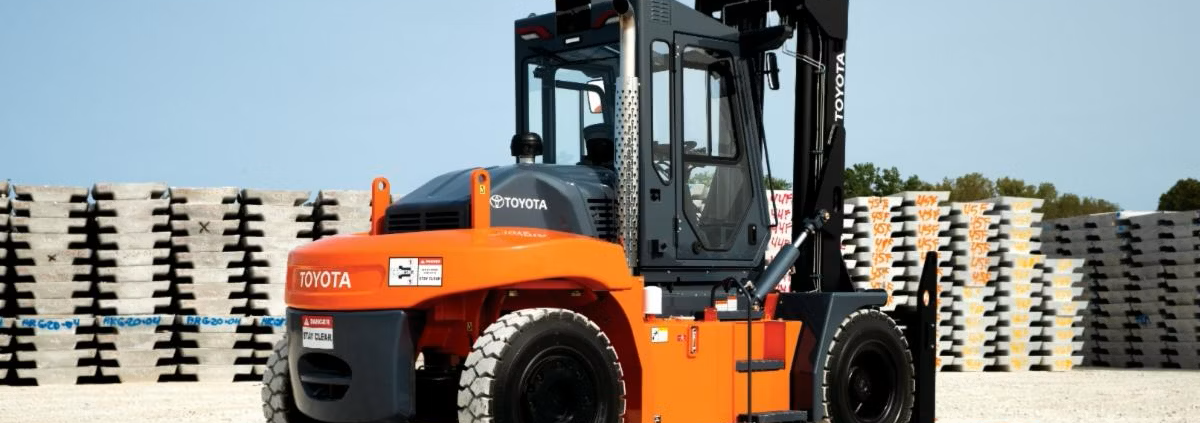Toyota Forklift Battery Replacement & Upgrade Guide: Choosing the Right Power Solution for Your Fleet
Toyota forklifts are known for their reliability, versatility, and strong performance in warehousing, manufacturing, and logistics operations. But even the best forklift can’t perform at its peak without a dependable power source. Whether you’re replacing a worn-out battery or considering an upgrade to lithium technology, understanding how to choose the right Toyota forklift battery is key to keeping your operations efficient and minimizing downtime.
In this guide, we’ll walk through compatibility, performance, and lifecycle cost factors to help you make the best decision for your Toyota forklift fleet.
- Why the Right Battery Matters for Toyota Forklifts
For an electric Toyota forklift, the battery isn’t just a source of power—it’s the heart of the machine, impacting:
- Run time per charge
- Lifting capacity and performance
- Downtime between shifts
- Maintenance frequency
- Overall operating costs
A poorly matched or aging battery can reduce efficiency, cause unexpected downtime, and increase maintenance demands. That’s why choosing the right replacement involves more than just price—it’s about compatibility, technology, and long-term value.
- Common Toyota Forklift Battery Types
When replacing or upgrading a Toyota forklift battery, you’ll usually choose between two main chemistries:
Lead-Acid Batteries
- Pros: Lower upfront cost, widely available, proven technology
- Cons: Requires regular watering and equalizing, long charge times (6–8 hours), shorter lifespan
Lithium-Ion Batteries
- Pros: Fast charging (often under 2 hours), opportunity charging, maintenance-free, longer lifespan, consistent voltage during discharge
- Cons: Higher initial cost, requires compatible chargers, some models need integration with the forklift’s battery management system (BMS)
- When to Replace a Toyota Forklift Battery
Instead of waiting for a total failure, look for these signs that it’s time for replacement:
- Reduced run time per charge
- Reduced lifting power under load
- More frequent charging required
- Physical damage (bulging, corrosion, acid leaks—common with lead-acid)
- Approaching the typical cycle life limit for its chemistry
- Key Factors in Choosing a Replacement or Upgrade
- a) Voltage and Capacity
Match the forklift’s required voltage (commonly 24V, 36V, 48V, or 80V) and ensure the rated capacity meets or exceeds your operational demands.
- b) Battery Chemistry
For high-utilization, low-maintenance operations, lithium is often the better investment; for lighter-duty work and tighter budgets, lead-acid can still be suitable.
- c) Compatibility & Installation Fit
This is one of the most important factors for ease of use.
Compatibility Advantage: Modern lithium forklift batteries with a universal design can fit most Toyota electric forklift models, eliminating the need for model-specific packs. This means fewer battery types to manage, faster replacements, and reduced downtime when swapping between trucks.
If you’d like to see full specifications, compatible models, and technical details for this type of universal lithium forklift battery, visit our Forklift Battery Details Page for complete data and application examples.
- Benefits of Upgrading to Lithium in a Toyota Forklift
Switching from lead-acid to lithium can deliver major improvements for business operations:
- Longer Lifespan: 3–4 times the cycle life of lead-acid
- Higher Uptime: Opportunity charging keeps trucks running all shift
- Lower Maintenance Costs: No watering, no acid corrosion, fewer safety risks
- Better Energy Efficiency: Improved power utilization reduces electricity costs
Example: A three-shift warehouse can save hundreds of hours per year in labor and downtime by eliminating battery swaps and watering, while taking advantage of faster charging.
- Installation & Safety Tips
- Charger Compatibility: Use a charger that matches lithium charging profiles
- Battery Management System (BMS): Lithium packs should have BMS to monitor voltage, temperature, and charging status
- Weight Balance: Maintain the forklift’s counterweight balance requirements
- Professional Installation: Use certified technicians to meet electrical and safety standards
- Maintenance Tips for Longer Battery Life
For Lead-Acid Batteries
- Check electrolyte levels regularly
- Avoid deep discharges below 20%
- Equalize charge periodically to prevent sulfation
For Lithium Batteries
- Store at 20–80% state of charge if idle for long periods
- Keep within recommended operating temperatures
- Avoid non-compatible chargers
- Simplifying Fleet Management with a Unified Battery Platform
For fleets with multiple forklifts, different battery sizes and types add maintenance complexity and inventory costs.
Using a universal-fit lithium battery that works with most Toyota electric forklift models can simplify:
- Procurement (fewer SKUs)
- Technician training (same handling procedures)
- Battery swapping (less downtime)
This approach not only makes replacements easier but also unifies your fleet’s energy strategy.
- Conclusion
Choosing the right Toyota forklift battery comes down to your operational priorities, budget, and long-term plans. Lead-acid remains a solid option for lower-duty applications, but for high-uptime, low-maintenance, long-life performance, lithium is the clear winner. And with a universal design that fits most Toyota models, you gain both compatibility and operational efficiency.
By selecting a battery that meets your power needs and integrates smoothly with your forklifts, your Toyota fleet can deliver peak performance shift after shift.


